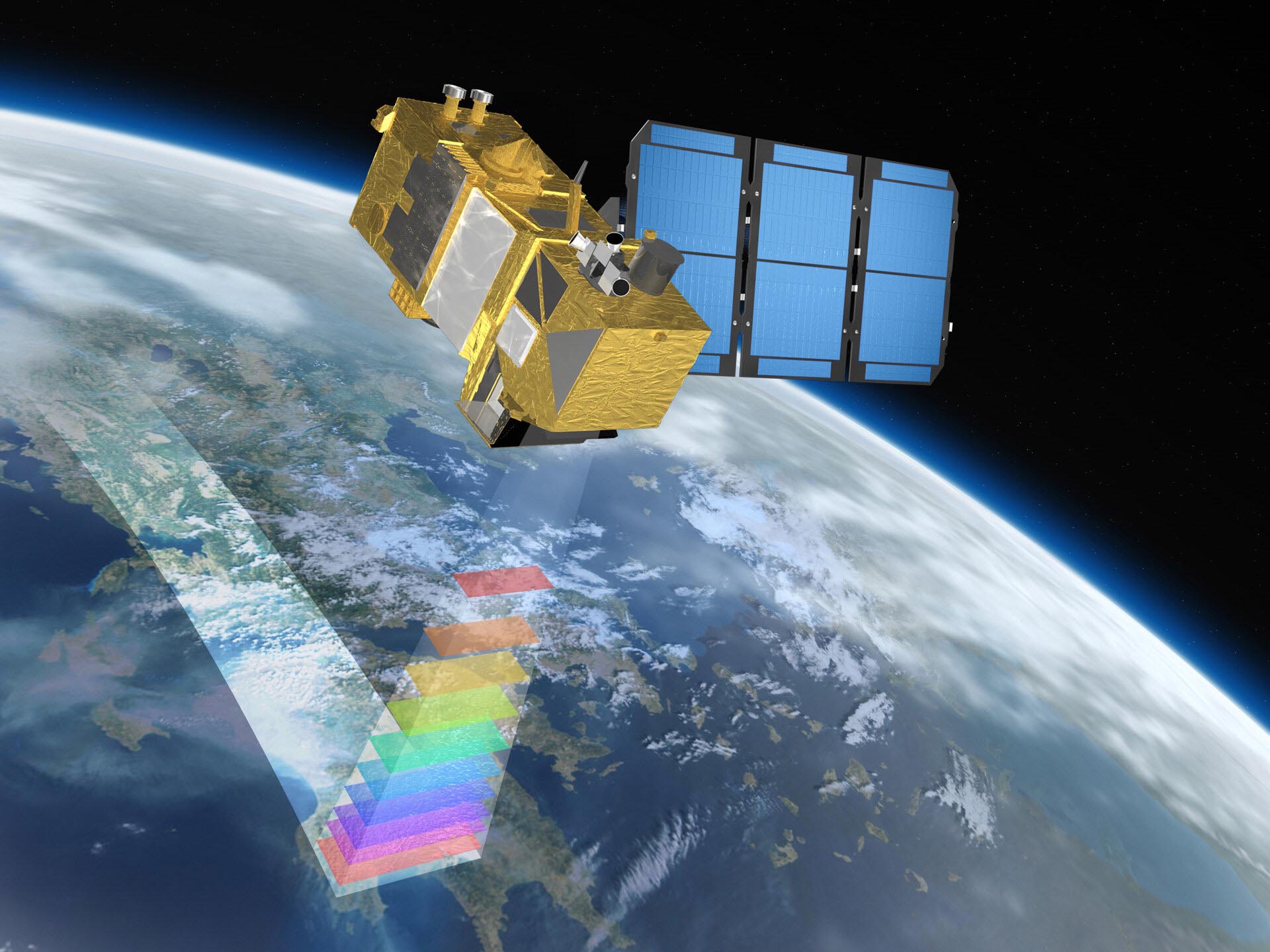Applications in space mostly require solutions close to the limits of what is technically feasible as well as high reliability. The business unit Space and Security of Fraunhofer IMS counters those challenging demands of its customers with state of the art and innovative MEMS technologies resulting in future-proof and reliable customer applications with focus on optical sensors.
Space
Robotics in space
One of those cutting-edge technologies within the business unit Space and Security of Fraunhofer IMS is the so-called BSI SPAD („backside illuminated single photon avalanche diode“) technology. BSI SPAD arrays serve their customers as highly sensitive detectors in LiDAR (“light detection and ranging“) sensors for a three-dimensional detection of the environment for various applications in space, such as robotics. Within the customer-specific ROIC (“readout integrated circuit”) of the BSI SPAD array, digital time stamps are generated for each pixel reproducing the time of flight of a laser pulse with a wavelength of 905 nm sent out by the LiDAR sensor.
Because of the compact and digital design of the ROIC itself, BSI SPAD arrays with high integration density can be realized by means of a modern wafer to wafer bonding process for LiDAR systems with high optical resolution. In addition, this customer-specific development approach not only enables the business unit Space and Security of Fraunhofer IMS to offer either extremely efficient or ultra-fast BSI SPAD arrays as LiDAR sensors, depending on the individual demands of their customers, but also allows for a wider implementation of robotic systems for detection of the environment under harsh conditions, such as in space.
Optical sensors for earth observation
For earth observation from orbit, the business unit Space and Security of Fraunhofer IMS offers state of the art optical sensors such as CMOS CCD („complementary metal–oxide–semiconductor charge-coupled device“) detectors for operation in TDI („time delay and integration“) mode. In this regard, focus is put on detectors for high resolution, multispectral, optical focal planes of future satellites for earth observation. Those satellites are used amongst others for scanning of urban regions in the context of city planning as well as for supportive reaction to natural disasters or other crises with the provision of high-resolution images of selected regions of interest.
As an additional innovative and forward-looking technology within the business unit Space and Security of Fraunhofer IMS, the IRFPA technology allows for a passive detection of objects by means of uncooled IR imaging methods. Depending on individual, customer-specific demands, either MWIR („mid wave infrared“) with wavelengths ranging from 3 µm to 5 µm or LWIR („long wave infrared“) with wavelengths ranging from 8 µm to 14 µm can be chosen as the wavelength range of choice for the IRFPA.
In this regard, MWIR sensitive IRFPA sensors are suitable for detection and surveillance of so-called “hot sources”, appearing amongst other things in firefighting. IRFPA sensors provided by the business unit Space and Security of Fraunhofer IMS allow for an integration in cube satellites in order to detect fires from space, thus supporting an early firefighting on site.




